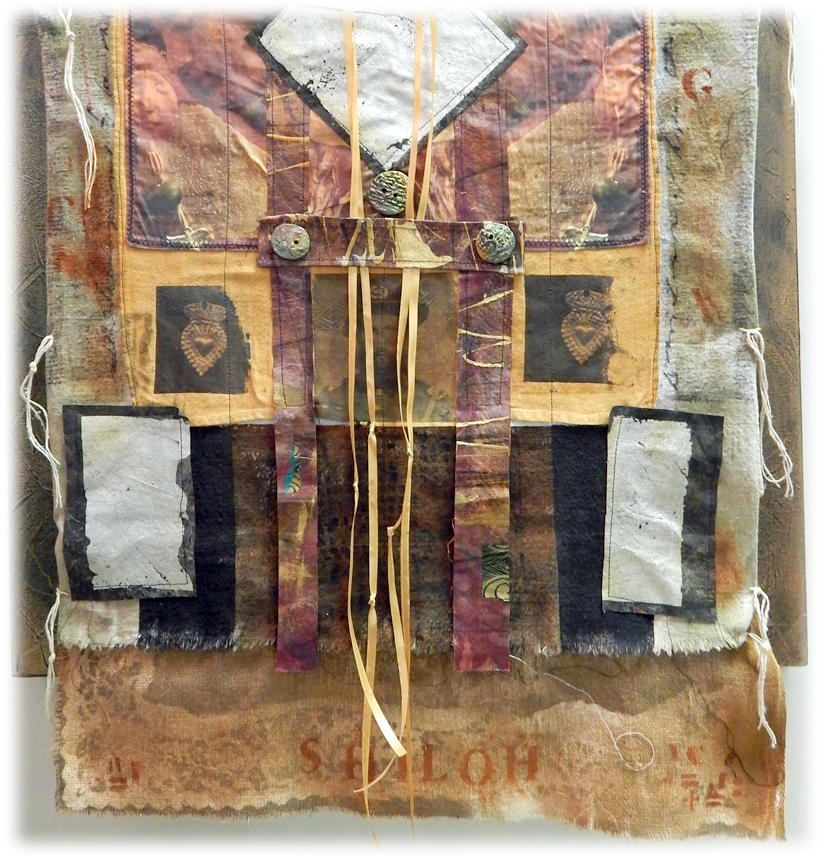
My artwork typically deals with combining, curating, collecting, and composing different elements for collage and assemblage. To make all of that work together requires a bit of engineering trial and error .
I’ve been posting a few photographs of experimental transfer processes that I’m trying with various combinations of beeswax, solvent, paper, and fiber just to see what works, what sticks, what is worth further experimentation to get the look I am striving for. The idea is not to make pieces of finished art just yet. It’s to put in some time and thought on combinations that might eventually suggest a way to express a meaningful concept in a different way.
For the first series of experiments, I’ve used a toner print on plain paper with four different substrates as image transfer receivers. I used the same image on all of them – here she is!
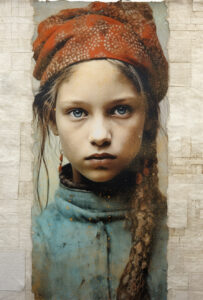
The first step is to transform the image to black and white and print it on a laser (toner) printer – mine is a very old Brother L2320D B&W laser printer, cheap, about $100.
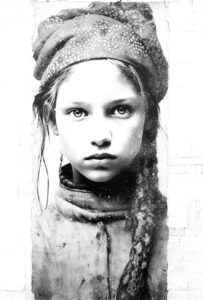
Here are the initial transfer results on four different surfaces – muslin, canvas, rice paper, and mulberry paper. Notice how the toner ink works differently on each surface.
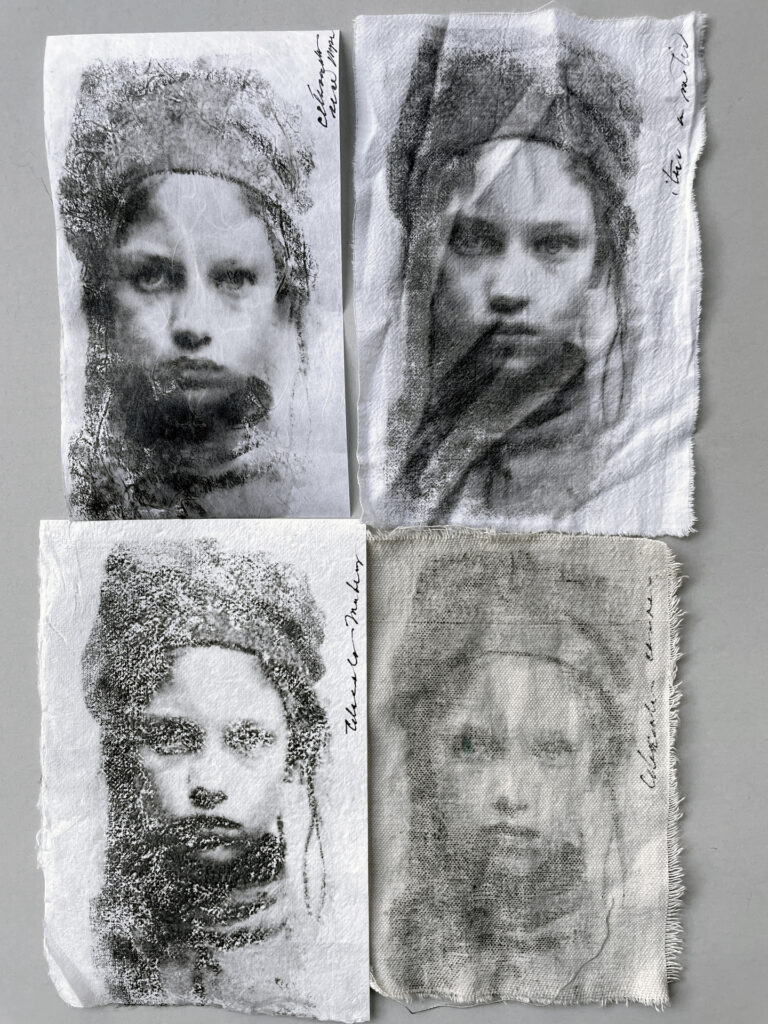
I liked the one on the upper right – it’s smooth cotton muslin. Here it is, below, next to another version on rough canvas drop cloth that used to live on my studio floor.
Both have a coat of beeswax added, then the beeswax is fused into the fabric with a heat gun.

The beeswax acts as a bonding agent between the muslin and the rice paper backing that it’s fused to. The transfer solvent doesn’t seem to affect the beeswax. That was one of my questions and concerns, but it all seems to work together the way I had hoped.
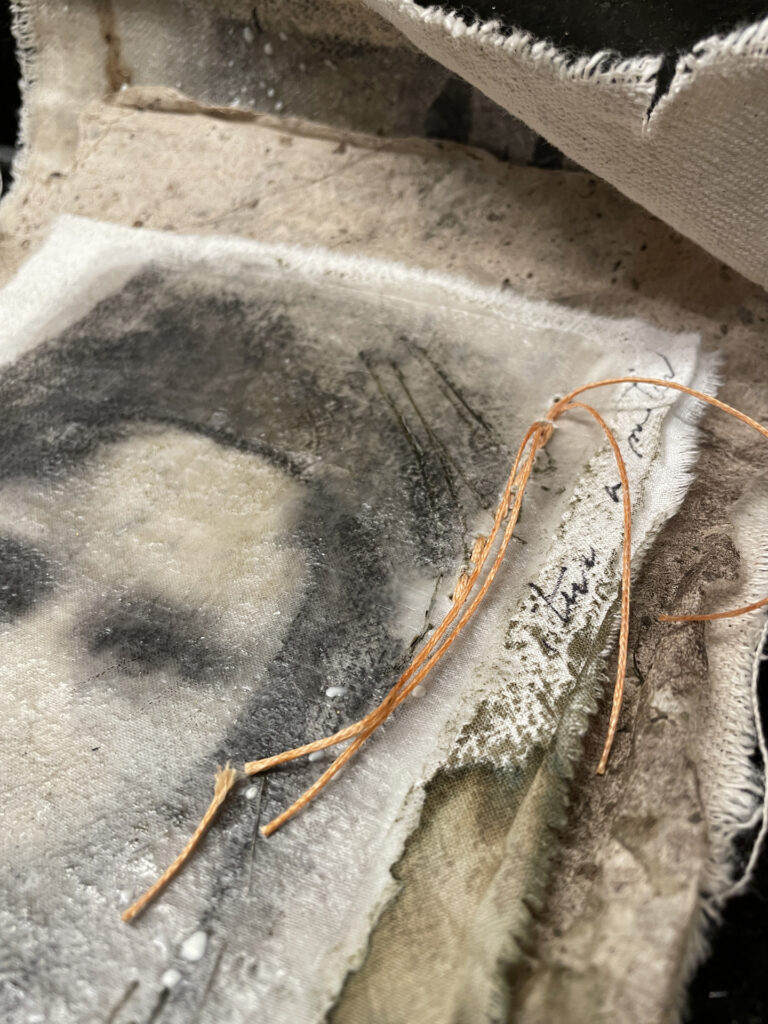
After everything was fused, I wanted to see how it would stitch with waxed linen. This is another way of ensuring the layers are completely bonded together. It worked great.
The picture below looks strange, but it is actually the backside of the layered paper and muslin piece. It’s interesting to see how the image has come through the back because the beeswax has made it translucent. So much to discover!
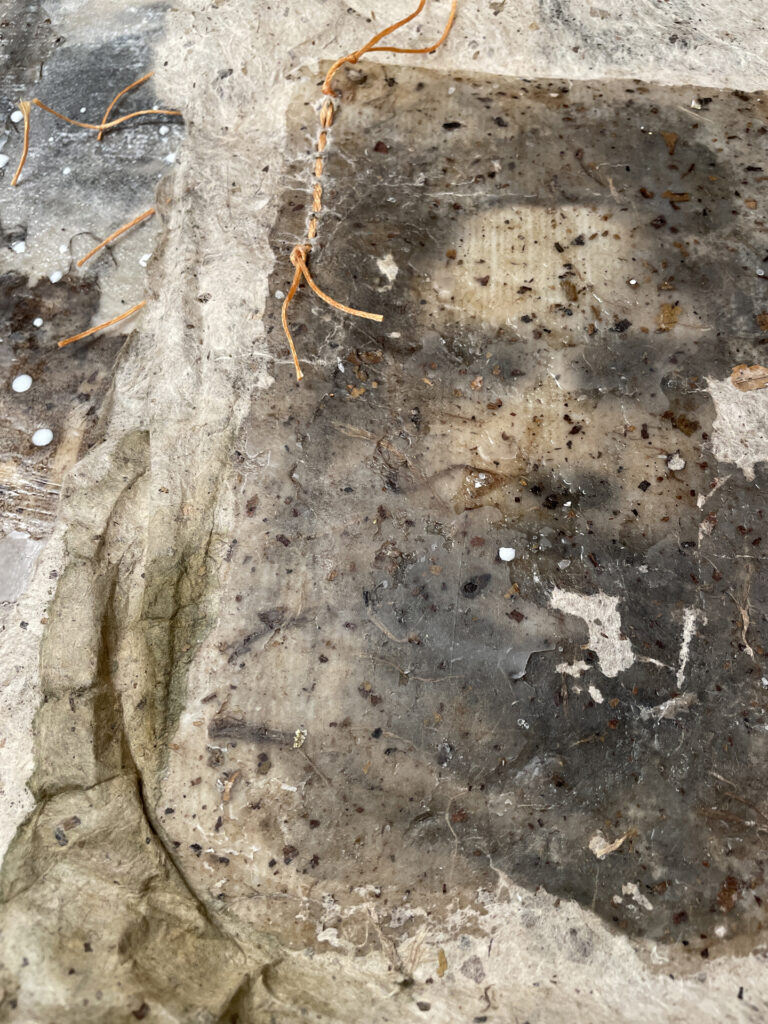
So far, this effect below is what I have been working toward – an image transfer on fabric that is compatible with beeswax and remains supple without cracking. Most importantly, I wanted a mysterious translucency. The fine white wax spatters add another layer of illusion.
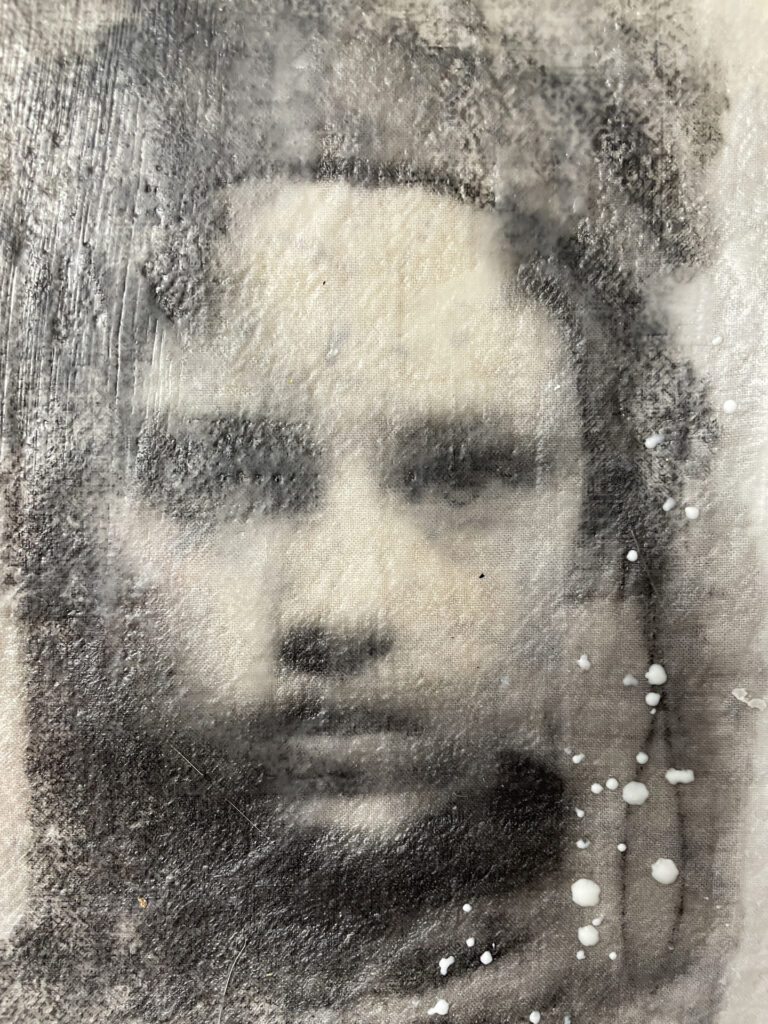
We shall see where all of this goes! Hands-on research is always fun.
What have you been doing in YOUR studio lab lately?? Do it safely!

What exciting discoveries! Thanks so much for sharing.
Thanks, Gaye!!
You are amazing! Love all your exploration and love that you are sharing your experimentation.
Thanks, Katie!!
Absolutely fascinating and each has a mystery of this beautiful little girl. It evokes lots of emotion if you just sit and appreciate the values. Wonderful work Lyn. You amaze me always!
Sandy, thanks so much – ♥
I absolutely love them all!!!
Thanks, Cindy!
I love to experiment too with different media. I enjoyed reading about your interesting techniques. I wonder how the image would look with a layer of encaustic media.
I was afraid if I used medium instead of pure beeswax, it wouldn’t be as flexible, but it’s worth a try. 🙂
Lyn,
This is so interesting! It is so wonderful & fun to learn about your artistic exploration. Thank you for sharing!
I love those transfers and the affects you’ve achieved! What fun! Thank you for sharing!
Oh my gosh! This is what I was describing in my note to you! Very exciting! I didn’t know you could do that with beeswax!! Very exciting!
Nothing as exciting as what you are doing, love what you are doing and thanks for sharing!!!
Ann